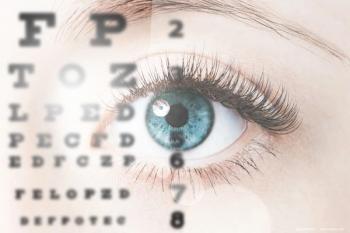
Radiation benefits AMD
The MERITAGE Study (NeoVista), a study to evaluate the effect of epimacular brachytherapy in patients with exudative age-related macular degeneration previously treated with ranibizumab (Lucentis, Genentech), showed that the treatment results of radiation therapy were “interesting and encouraging” at the 2-year time point, according to Pravin Dugel, MD.
Orlando-The MERITAGE Study (NeoVista), a study to evaluate the effect of epimacular brachytherapy in patients with exudative age-related macular degeneration (AMD) previously treated with ranibizumab (Lucentis, Genentech), showed that the treatment results of radiation therapy were “interesting and encouraging” at the 2-year time point, according to Pravin Dugel, MD.
The goal of the MERITAGE Study was to determine if the treatment burden associated with intravitreal injections of an anti-vascular endothelial growth factor (VEGF) drug could be decreased with the addition of epimacular brachytherapy, and if the visual acuity level could be maintained. The study patients’ treatment had a poor response to anti-VEGF drug injections despite a loading phase of three consecutive injections of ranibizumab and a maintenance phase of five additional injections in the year before study enrollment or a minimum of three additional injections in the 6 months before enrollment.
At the 2-year time point after one application of epimacular brachytherapy, 68.1% of patients maintained their visual acuity, 32% had increases in visual acuity, and 7.5% had a gain of 15 letters or more. As a group, there was an average decrease of 6.7 letters. The average increase was 10.1 letters among the patients who gained vision, Dr. Dugel said.
A mean of 4.2 injections were administered annually; 15% of patients had no injections, and 38% had 2 or fewer injections annually.
Despite the difficult-to-treat patient population, “almost one-third of patients had improved visual acuity,” Dr. Dugel said. “Notably, those patients with the greatest improvements in visual acuity had the fewest number of injections. Radiation must have had a beneficial and synergistic effect.”
Patients with classic AMD seemed to respond better than the other types, Dr. Dugel said. The results of the CABERNET Study of the effect of epimacular brachytherapy on treatment-naïve AMD are expected in the first quarter of 2012.
For more articles in this issue of Ophthalmology Times Conference Brief
Newsletter
Don’t miss out—get Ophthalmology Times updates on the latest clinical advancements and expert interviews, straight to your inbox.















































.png)


